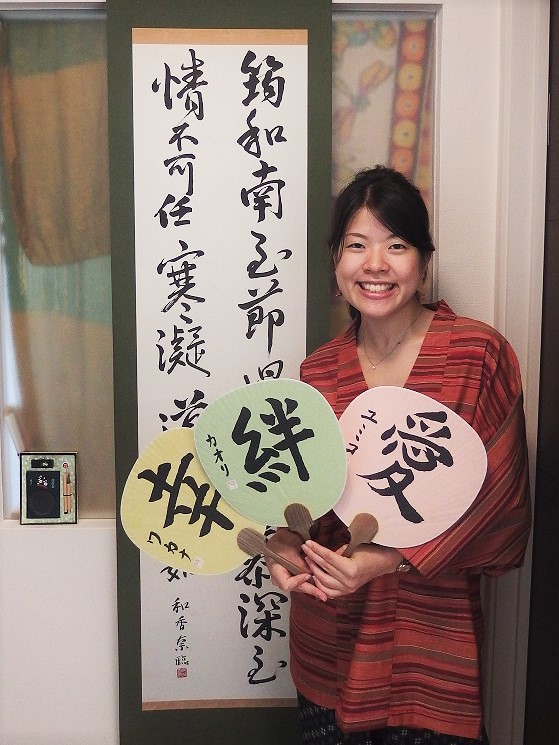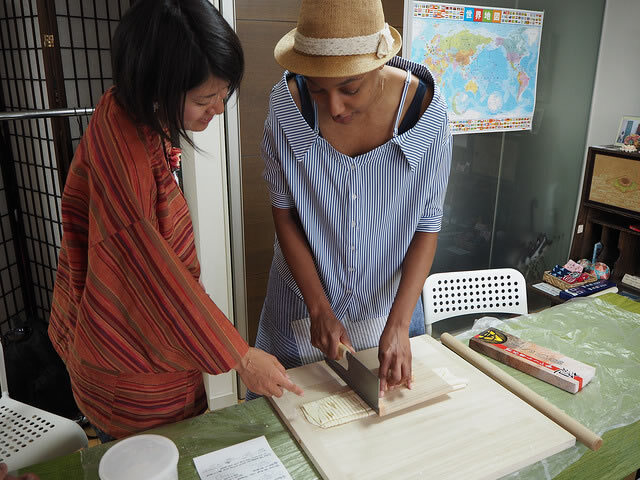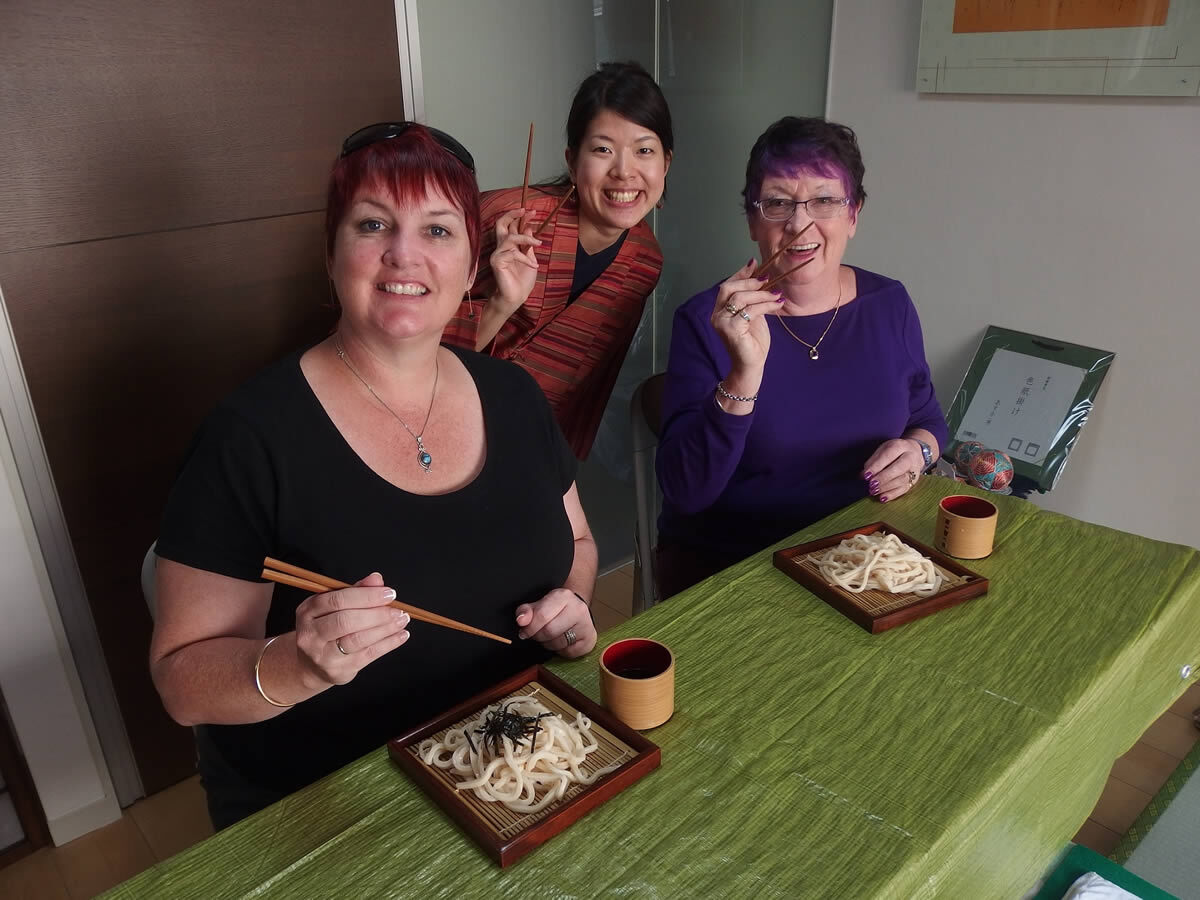Wakana is a woman of many talents — a licensed calligraphy instructor, a dietitian, a world traveller, and a craftswoman skilled in the Japanese arts of paper-folding (origami), and weaving (tsumami-zaiku).
All of these skills come together to create Wakana’s expansive portfolio of traditional Japanese arts and culture classes that she offers exclusively here on TripJunction.

“I have been learning Japanese calligraphy ever since I was 8 years old,” she recalls, “But it wasn’t until I was much older that I ever decided to do anything with it.”
Wakana did a “working holiday” in Australia — a visa program that allows passport holders of certain nationalities to travel to partner countries and work for a short period of time while absorbing the culture. In Australia, her experience was overwhelmingly positive.
“Everyone in Australia was so kind to me, my host family welcomed me into their family with open arms and completely took care of me,” says Wakana, who still visits her host family periodically to this day.
“I always wondered how I could ever repay them for their kindness, but they told me to pay it forward and to be kind to any traveller in my position in Japan.”
This planted the seed for Wakana, who, after experiencing life as a visitor in a foreign country, could empathize with the struggles that first-time tourists to Japan surely face as well.
“Two years later, I went to Canada to learn English, and I made a presentation about my hobby — which at the time, was Japanese calligraphy.”
“My teacher was very encouraging. He wanted to see me do something with my skills and passion, but I wasn’t quite confident in actually teaching calligraphy just yet.”
The idea of teaching calligraphy to foreigners didn’t strike Wakana immediately, but after repeated discussions with the people around her, she began to wonder what she could do for the increasing number of foreign tourists visiting Japan.
“Suddenly, it hit me that this could give me inspiration and a greater sense of fulfillment.”
In her Japanese calligraphy lessons, guests can pick a kanji, a Chinese character representing a word, and learn everything from the way to hold a pen, to the stroke order of the word, ultimately mastering the kanji of their choice, and bringing it home on a nice piece of paper, or an uchiwa, a Japanese fan.
With a combination of uniquely Japanese skills, Wakana has worked to find a way to bring them all together into a cohesive experience for visitors.
“One of my most popular courses actually combines udon and calligraphy,” she laughs.
“We start by making udon, and while we are waiting for it to set, we do a calligraphy lesson. I don’t think anyone else offers a lesson like this.”

Udon is a thick wheat noodle often used in basic Japanese cuisine. A versatile dish, it can be dressed up in many different ways depending on the ingredients on hand. This makes it a practical dish to learn, and one that can be easily re-made in each guest’s country of origin.
“I’ve seen quite a few sushi experiences online, but honestly, I think for many people, going home and re-creating a fresh sushi meal in their own home can be quite challenging.”
“But I know from experience, having lived in both Australia and Canada, that I was able to successfully make udon noodles easily when I lived there.”
A basic udon recipe only calls for flour, salt and water — the rest is in the process, which Wakana is happy to teach. When there is extra time, she also likes to teach how to make a traditional Japanese omelette (tamagoyaki) as well.
Another popular experience that Wakana offers is one that teaches traditional Japanese handmade craftwork known as tsumami-zaiku.
“Right before I got married, I got into making traditional woven craftwork called ‘tsumami-zaiku’. I really enjoy it. It’s a traditional Japanese art of pinching and folding old cloth fabric into designs, such as flowers.”
The craft itself is about 200 years old, originating in the Edo period, and was traditionally seen in handmade accessories carefully woven for Geisha and Maiko. In Wakana’s lesson, she encourages guests to make magnets, corsages, and hair bands as practical souvenirs that they can take home with them as mementos of their trip.
Whether they’re cooking, learning the delicate art of calligraphy, or re-creating traditional arts and crafts, Wakana’s main goal of each experience is for her visitors to have a memorable time in Japan.
“One of the most rewarding things about my lessons is being able to meet people from all over the world,” she says, noting that she prefers to keep her class sizes small and intimate.

“I don’t like to blend classes, so I tend to keep them relatively private, if I can. I’d rather my guests feel comfortable talking to me about anything. I want them to feel free to ask questions — not just about the task at hand, but about anything they’re curious about.”
Remembering the struggles and the kindness that she endured during her own international travels, Wakana is determined to pay it forward with her guests.
“Everyone who comes to my classes are really sincerely good people”, she beams with pride.
—————————
Meeting in central Tokyo, near Akihabara, Wakana’s classes take place in a Japanese home setting. Please bring socks as you will take your shoes off once you are inside the house! Lessons can be anywhere from one and a half, to three hours in length! Enjoy friendly conversation and casual Japanese traditional arts with someone who is both passionate and experienced.
